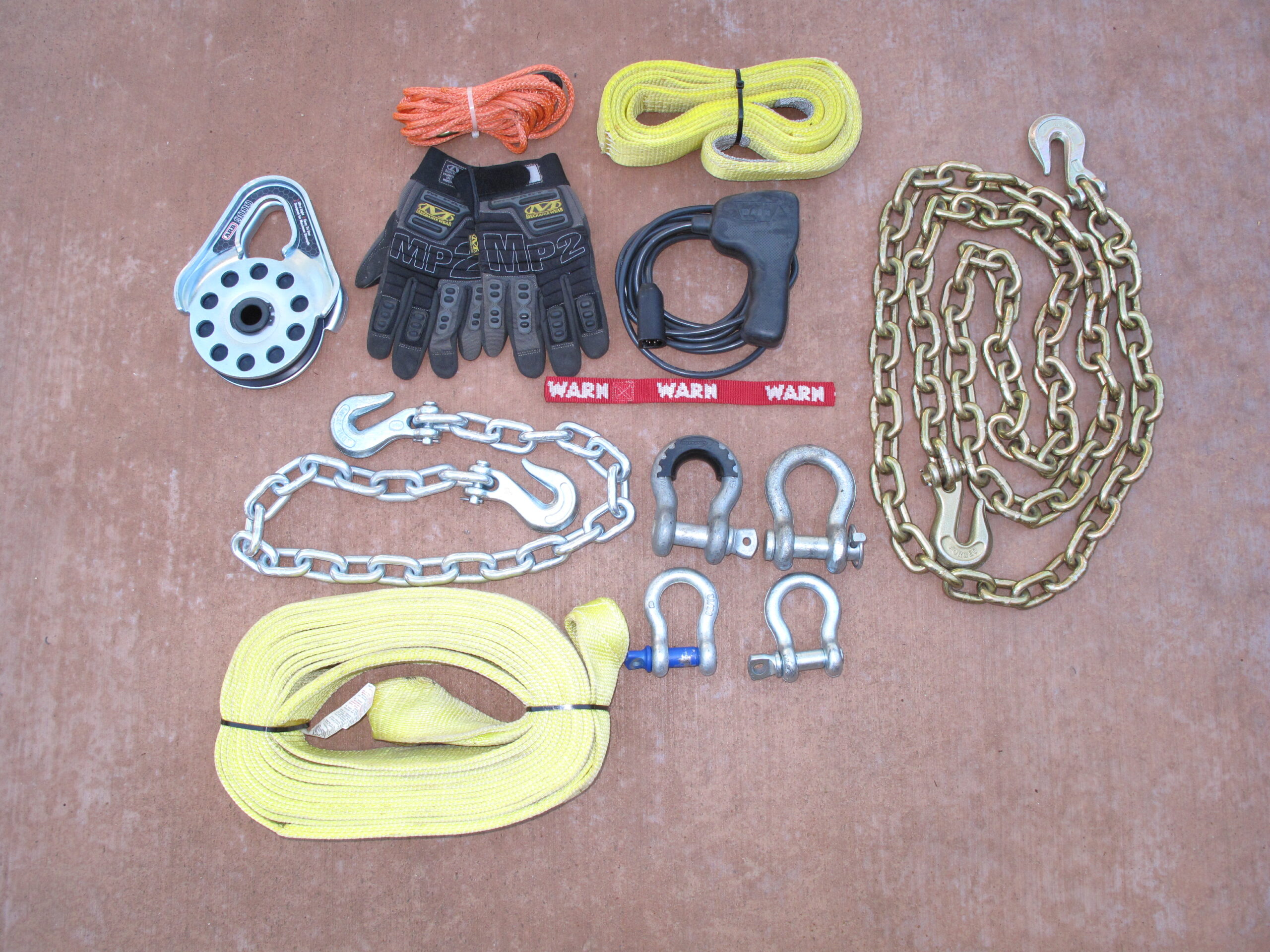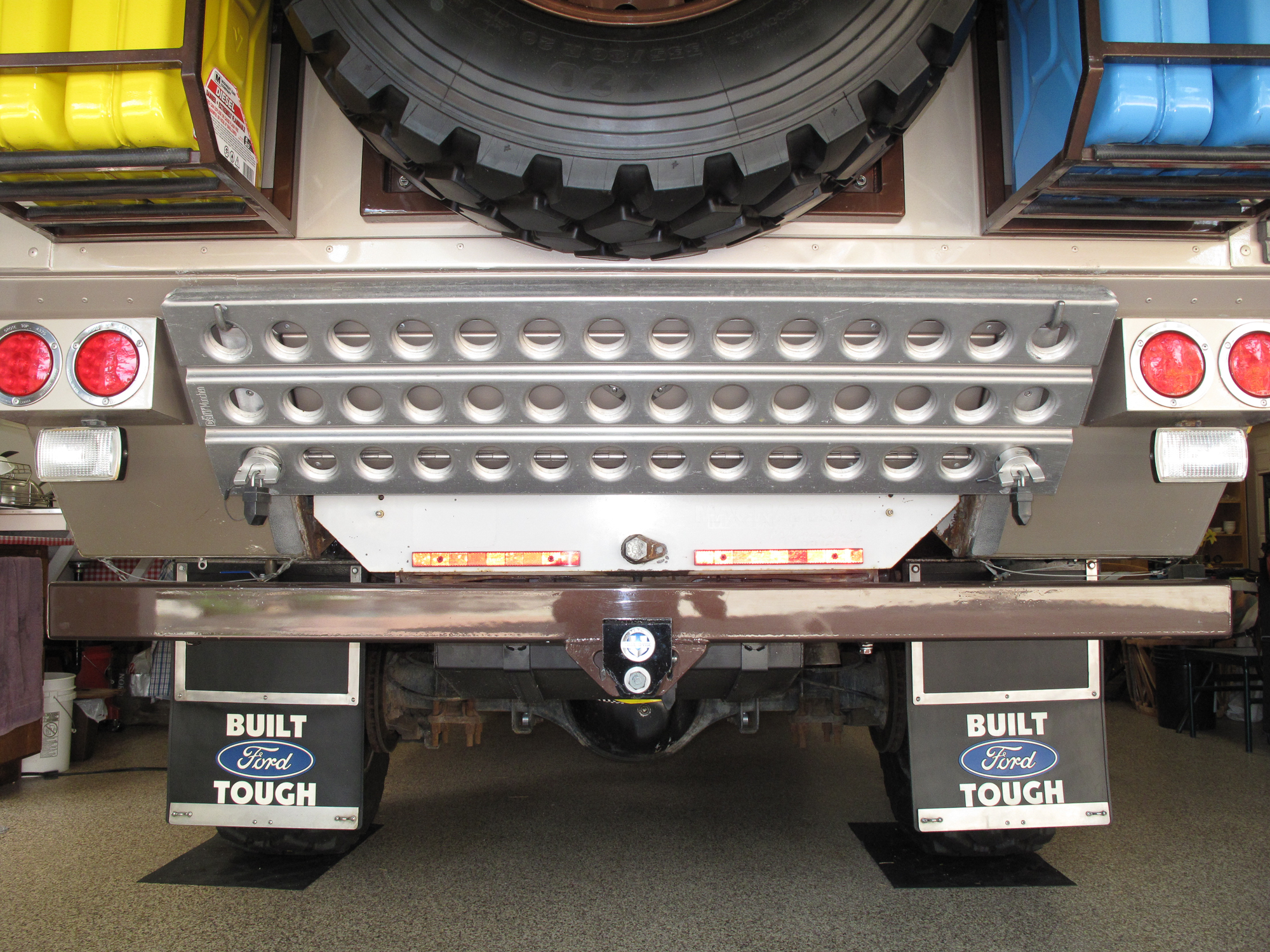Okay, let’s be honest. Just because I’ve been driving four-wheel drive vehicles for 50 years and just because I’ve covered most of the major four-wheel-drive events in the United States (including numerous trips over the Rubicon Trail, the Jeepers Jamboree, All 4-Fun, Sierra Trek, and Moab’s Easter Jeep Safari), I am not a “four-wheeler.” Getting stuck and digging or winching myself out is not what I consider fun. On the other hand, things can go sideways, and it’s usually not on purpose. I maintain that the definition of getting stuck is when you leave the keys in the ignition and walk away from your vehicle because you know nobody can steal it. Otherwise, you’re just temporarily detained.
Having had the experience of going through three Camel Trophy training seminars in England and France and participating in three Camel Trophies (Australia, Russia, Madagascar), I learned a few things that were useful when Monika and I spent two years and 50,000 miles exploring South America before driving around the world twice on roads that we were told were impossible. With the dream of visiting some of the planet’s most beautiful and unique places, the underlying goal was still to overland from point A to point B without breaking down or getting “temporarily detained.” Extraction tools are like first aid medical supplies. You hope you never need them, but you better have some. Even a good winch is useless if you don’t know how to use it. Packed within easy access, our primary recovery kit weighs just over 40 pounds and has most of what we need in most cases—not all cases. It contains:
- Winch control cable
- Pair of heavy-duty gloves
- Dog leash, 15 feet long (see sidebar)
- Two heavy-duty welded-link chains with hooks on both ends (3.5 feet, 10 feet)
- Heavy-duty ARB snatch block
- Four D-ring shackles
- Tree-saver strap rated at around 35,000 pounds
- Extension/snatch-um strap (20 feet, 48,000-pound breaking strength rating)

Our primary recovery kit weighs just over 40 pounds and has what we need to get out from most “temporarily detained” situations.
Of course, we also have a Warn 16,500-pound winch. We even had two winches on The Turtle IV, but winching isn’t always the answer. Remember, you must have something to hook to. More than half of the time when we were temporarily detained, there was nothing to drop a hook over, and burying a tire for a dead man was an ugly possibility.
For example, we were following a remote track in the middle of the mountains in Tuva on the border of Russia and Mongolia. It was early fall, and winter was in the air. Our destination, some 50 miles away, was Kosh-Agach, which, according to the description in our Lonely Planet Guide, was “close to the middle of nowhere.” Pointed uphill, both the differentials under our 13,000-pound, four-wheel-drive truck and camper were sitting in the mud, all four tires were hopelessly spinning, and there wasn’t a tree in sight, demoting our winch to a decoration. Our 5,000-pound support trailer full of tires and extra fuel was sitting obstinately behind us with no intention of moving by itself.
It was time to figure out how we were going to proceed. Forward was not the answer. There was no winch point within a mile. I should mention that the remote track we were following was not on any of our detailed NORA maps, and it would likely not see another vehicle until spring. It was only August 2; it was getting cold and dark and it had just started to snow.
We buried our heavy-duty Pull Pal about 30 feet behind the trailer, lowered the big wheelbarrow tire on the trailer’s hitch to the ground, hooked up our 8,000-pound Warn winch on the rear bumper of The Turtle IV, hooked up a snatch block from the Pull Pal to the rear of the trailer, ran the winch cable to the back of our truck and pushed the button on the winch. The Pull Pal slowly bent in half and slithered through the mud—it’s probably still there. The trailer did not move.
About that time, realizing that we might actually be seriously stuck, three curious yak boys who had been camped down by the lake arrived and saw our predicament. We all started hauling rocks and jacking up each corner of the truck with our trusty Hi-Lift Jack, enough to get rocks underneath the tires and build a temporary path directly behind them. With the light failing and Monika standing behind the trailer waving a flashlight madly, I was able to back up to firmer ground and turn around.

Our three unsolicited helpers at our “stuck” scene in Tuva; they helped us haul rocks to lift the tires and build a temporary path behind them to extricate the vehicle. It worked.
If snow, ice, or even mud is a potential problem, such as when we drove up the Lena River on the ice for 700 miles, a good set of chains can be worth its weight in gold, and yes, they are heavy to pack. If we know we are going into areas where chains could keep us from getting stuck, we carry a set for both front and rear tires and practice installing them in our driveway to make sure they fit.
We carry two 5-ton Lincoln hydraulic jacks, each with a 20-inch lift capacity which can be extended another 8 inches with blocks. The blocks are custom-made to fit where we have to pack them. Either of these hydraulic jacks can comfortably lift a corner of our truck off the ground for changing a flat or rotating the tires. One of the blocks has a cutout that exactly fits the foot of both our hydraulic jacks and our 60-inch Hi-Lift X-treme jack.
The Hi-Lift X-treme is tested at 7,000 pounds and rated at 4,660 pounds. It can lift half of what amounts to a 7,000-pound axle weight. It has many uses, but for getting unstuck, you need places on your vehicle where a Hi-Lift jack can be effective without tearing the bumper off.



In our case, we have two 2 x 2-inch receiver sockets on each side of the front and rear bumpers into which we can insert what we call a jack-point extender. There is also a standard receiver socket on the rear used for our Yakima HoldUp bike rack or for towing a trailer. A sixth receiver on the front can be used for pushing a trailer into a tight space or even adding a motorcycle rack as we did on The Turtle II.
The jack-point extender I mentioned is simply two lengths of heavy-duty drawbar with an outside diameter of 1 7/8 x 1 7/8 inches; one is 10 inches long and the other is 12 inches. These are welded together at a 25 percent angle. When inserted into any of the four side 2 x 2-inch receivers, the jack-point extender allows us to lift a corner of our 14,000-pound expedition truck off the ground, lifting directly on the frame. It also gives an extra 10 inches of lift and keeps the top of the jack bar from tilting and damaging the sides or front of the truck.


If you have ever jacked up the corner of a heavy vehicle or even a small SUV with a Hi-Lift Jack, you must appreciate the amount of weight and effort it takes to operate the jack safely. Even if you are a grown man or woman, the Hi-Lift handle will require all of your weight to lift anything near its 4,660-pound-rated capacity. To make it significantly easier, we use a cheater bar to increase leverage capacity. These are not recommended by the factory, but they do use them in testing, and they were willing to give me the specs needed to make my own.
We also carry two 6-foot aluminum sand ladders to assist in getting out of deep sand, mud, or snow. Placed in front or behind a bogged tire or under it, it will often get you unstuck without digging. They can also be used to bridge a ditch, serve as a shower mat, a place to clean fish, or just a clean surface to keep your tools out of the dirt.
In case you are still wondering, we have used every tool and accessory mentioned above numerous times in the last 50 years and hundreds of thousands of miles of overland travel. Some inspection of the road ahead can save you a lot of digging, jacking, hauling rocks, and winching. If you want to just look like you’ve been stuck, smear a little mud on the fenders and make up a good story.

A good set of multi-functional military aluminum sand ladders is indispensable for getting out of sand, mud, or snow.

During our circumnavigation of South America in 1988-89, this was the only route from Manaus, Brazil, to Caracas, Venezuela, where we were shipping our vehicle back to Florida. After military clearance, we drove 100 kilometers north before encountering a mud hole too deep to cross. We managed to turn the truck around and loaded it on a river barge in Manaus traveling up the Rio Negro and Rio Branco, past the section where most of the road was under 2-3 feet of water. Reaching Boa Vista, we were able to travel north by road again.
What’s a dog leash in recovery terminology?
Whether you are winching a heavy vehicle out of a sand trap or just pulling a tree stump off the trail, when the vehicle being winched begins to get traction or the stump really starts to move, the winch cable will go slack. When it tightens up suddenly, it can snap and become very dangerous if anyone is standing nearby. When it goes limp, it can spool on the winch drum, and later, as the cable tightens up again, it can bury itself into the remaining cable on the drum, making it very difficult to pull more cable out. With the dog leash clipped to the cable, the operator can stand back at a safe distance and, by pulling on the dog leash, keep tension on the cable as it safely and smoothly winds onto the drum.

Recovery Essentials
The tried and proven Plumb Official Boy Scout hand axe has been our constant travel partner for decades.
Different shovel designs have specific advantages. Long handles can be useful but are hard to store. A spade can be helpful for digging holes, but a flat-nose design is better if you are trying to dig out a differential buried in sand or mud.
The Extreme Outback take-apart shovel has many advantages and includes an extension handle for when you need it. The Silky Katanaboy folding saw will quickly cut through just about any size limb or deadfall. The famous folding Army Utility shovel is still the first one we grab.



.
.
Editor’s note: Best practice and real-world implementation of recovery tools do not always align; however, guidelines for best practice should be followed whenever possible.
Please enjoy Episode 113 of the Overland Journal Podcast: The Turtle Expedition Shares 50 Years of Overland Wisdom with Gary and Monika Wescott
Editor’s Note: This article was originally published in Overland Journal’s Summer 2024 Issue.
Our No Compromise Clause: We do not accept advertorial content or allow advertising to influence our coverage, and our contributors are guaranteed editorial independence. Overland International may earn a small commission from affiliate links included in this article. We appreciate your support.


